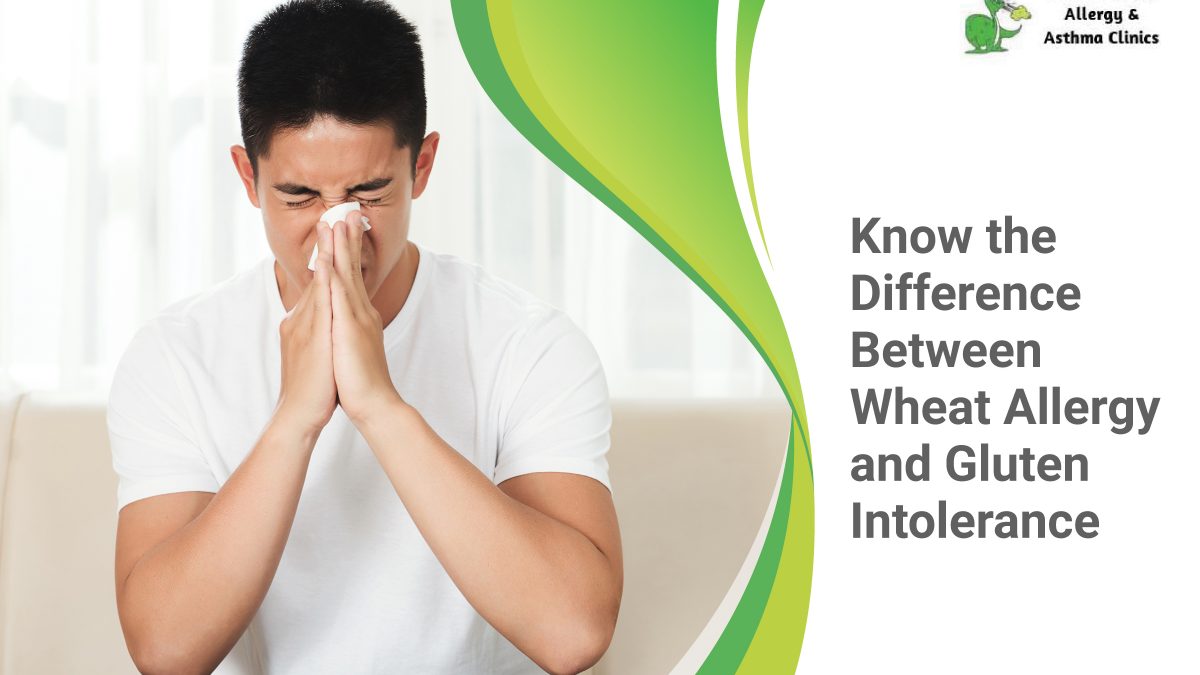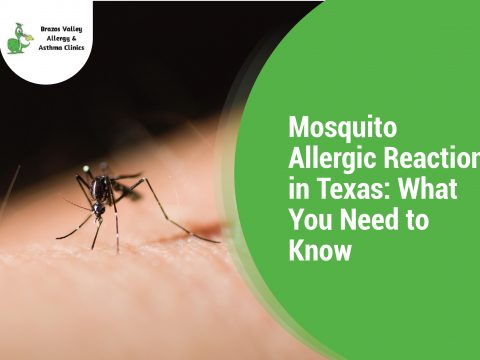- 979-485-9287
- office@bvallergy.com
-
 979-251-7804
979-251-7804
Know the Difference Between Wheat Allergy and Gluten Intolerance

Foot Allergies: Causes, Treatments, and Home Remedies
December 27, 2022
Is Allergen Immunotherapy A Long-Term Solution for Allergy Relief?
January 26, 2023Wheat vs. Gluten Allergy
Wheat allergy and gluten intolerance typically manifest similar symptoms. Individuals who experience wheat allergy confuse the symptoms with gluten intolerance. However, they are not the same.
What is the Difference Between Wheat and Gluten Allergies?
The immune system of individuals with wheat allergy negatively reacts to gluten, treating them like viruses or bacteria. In other words, their body’s natural defenses can’t identify harmless compounds correctly.
In gluten intolerance, the immune system overreacts to gluten, a compound found in wheat, and triggers an abnormal immune system reaction. Different medical conditions require specific treatments and management. That’s why it is crucial to identify the signs and symptoms of wheat allergy and gluten intolerance. This article will highlight the differences between the two.
You’re on the right page if you want to know the difference between wheat allergy and gluten intolerance. Are gluten and wheat the same? The answer is no. Keep reading to find out.
Understanding Wheat Allergy
A wheat allergy occurs when your body’s natural defenses try to eliminate foods that contain wheat. It can be caused by accidental consumption or exposure. Allergists often recommend avoiding wheat to prevent an allergic reaction. However, it is not easily achieved. Many food groups contain wheat, including those you do not typically expect.
Some examples of wheat allergy symptoms are:
- Soy sauce
- Hotdog
- Ice cream
- Baking mix
- Cereals
- Crackers
- Energy bars
- Pizza
- Pasta
- Soups
The list could go on and on. The fact is that wheat is almost always present in many of the foods you eat daily.
Signs and Symptoms
The common signs and symptoms of wheat allergy could appear within minutes following an accidental consumption or exposure. The severity differs from one person to another. However, you should never take them lightly.
Symptoms of a wheat allergy:
- Stomach cramps, nausea, or vomiting
- Diarrhea
- Swelling, itching, or irritation of the mouth or throat
- Nasal congestion
- Difficulty breathing
- Anaphylaxis
- Headache
- Hives, itchy rash, or skin bumps
Important Note on Anaphylaxis
The signs and symptoms of wheat allergy are typically mild and temporary. On the other hand, some individuals may experience a life-threatening reaction called anaphylaxis. Anaphylaxis can be potentially life-threatening if left untreated.
Here are some examples of its symptoms:
- The skin begins to turn pale or blue
- Chest pain or tightness and discomfort
- Swelling or tightness of the throat and airways
- Difficulty swallowing
- Severe breathing difficulties
- Dizziness or fainting
- A sudden drop in blood pressure
If a person shows signs and symptoms of anaphylaxis, call 911 as soon as possible. Time is crucial in saving a person’s life from experiencing an anaphylaxis attack. Be sure to act and think fast.
Additional Information
Non-food components may also trigger wheat allergies. Below is a list of the other things to look out for when you are allergic to wheat.
- Cosmetics
- Clays
- Bath products
Always read the label before purchasing the items listed above.
Understanding Gluten Intolerance
Gluten intolerance (celiac disease) is an immune reaction to gluten consumption. Gluten is a compound found in wheat, rye, or barley.
Accidental consumption of gluten-rich food triggers an immune response in your small intestines. Over time, you may develop complications like malabsorption due to damage along the linings of your small intestines.
Here are some examples:
- Diarrhea
- Fatigue
- Weight loss
- Bloating
- Anemia
Celiac disease in children may affect their growth. Unfortunately, there is no cure for this medical condition. On the other hand, it is highly manageable.
Signs and Symptoms
The signs and symptoms of celiac disease differ in adults and children.
Here are the typical conditions in adults related to the digestive system:
- Weight loss
- Diarrhea
- Bloating and flatulence
- Fatigue
- Nausea and vomiting
- Constipation
- Abdominal pain
Some adults experience signs and symptoms that have nothing to do with the digestive system.
Here are some examples of gluten allergy symptoms:
- Mouth ulcers
- Osteoporosis that leads to loss of bone density
- Osteomalacia Bone that leads to bone softening
- Hyposplenism leads to a reduced spleen function
- Dermatitis herpetiformis leads to itchy and blistery skin rash
- Nervous system malfunction, like numbness and tingling in the feet and hands
- Cognitive impairment and problems with balance
- Joint pains
- Headaches and fatigue
- Iron deficiency leading to anemia
Signs and Symptoms in Children
Gluten allergy symptoms:
- Nausea and vomiting
- Pale and foul-smelling stools
- Swollen abdomen
- Chronic diarrhea
- Constipation
- Flatulence
- gluten allergy rash
Below are the complications that affect growth and development due to impaired consumption of nutrients:
- Neurological symptoms, such as attention-deficit/hyperactivity disorder (ADHD)
- Learning disabilities
- Headaches
- Poor muscle coordination
- Seizures
- Failure to develop in infants
- Irritability
- Anemia
- Weight loss
- Short stature
- Tooth enamel damage
- Delayed puberty
Now that you know the critical differences between wheat allergy and gluten intolerance, let’s discuss the treatments.
Wheat Allergy Treatment and Management Tips
The treatment and management approach for a wheat allergy depends on the severity of the allergic reaction. Here are the common treatments that allergists typically recommend.
Avoiding Triggers
Avoiding all the possible triggers can reduce the risks of experiencing an allergic reaction. Read the labels of the items before buying to be on the safe side. When eating out, ask the waiter or manager to ensure no wheat content will be served in the food you’re ordering.
Over-the-Counter Anti Allergy Medications
OTCs are safe and highly efficient in treating allergic reactions. Moreover, they are affordable in almost all pharmacies. Some examples are antihistamines, corticosteroids, and decongestants. Take these medications as recommended on the label or as prescribed by your allergist.
Celiac Disease Treatment and Management Tips
Unfortunately, there is no treatment for gluten intolerance despite modern medicine’s advancement. However, excluding gluten-rich food from your diet is a practical management approach.
Avoid these:
- Pies
- Cakes and pastries
- Gravies and sauces
- Pasta
- Bread
- Cereals
- Biscuits or crackers
Gluten-free foods:
- Fruits and vegetables
- Dairy products like cheese, butter, and milk
- Rice and rice noodles
- Meat and fish (not breaded or battered)
- Potatoes
- Gluten-free flours, like rice, corn, soy, and potato
Boost Your Immune System and Live an Allergy-Free Life
Effective allergy treatment starts with accurate testing. Our allergists specialize in proper allergy testing to provide the right treatment for your condition. We also offer food allergy treatment and management for the entire family.
To know the essentials of food allergies and how to treat them, you can visit Dr. Jantzi, a board-certified allergist and immunologist in the Brazos Valley area. He provides safe and efficient treatments for patients with allergies, asthma, and immune system illnesses.
Book an appointment here.




